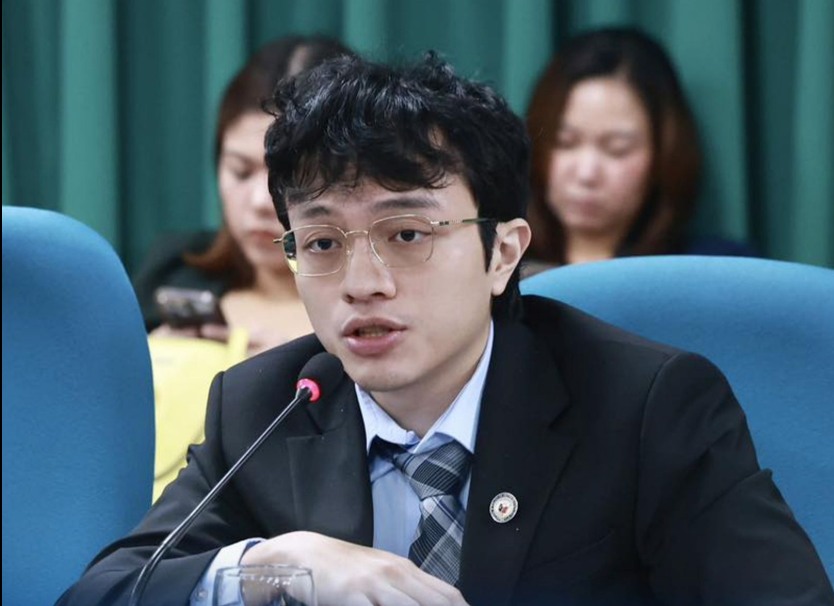The government is not keen on raising palay output judging by its decision to retain the 15% tariff on imported rice. Rather, it sees the tariff as a revenue-generating scheme applauded by favored rice importers, who will increase import volumes, to hell with the bankrupted rice farmers. Instead of reducing rice imports, the Marcos Jr. regime is even negotiating for multi-year imports from Pakistan, which has a large bread-eating population
Until now, the Department of Agriculture (DA) has not explained why the country’s rice deficit soared to 23% from a low of less than 7%, a figure that could be reduced further with modern rice-milling equipment and a drastic slash in post-harvest losses. At the estimated 37,000 metric ton (MT) national daily consumption, it means the entire population consumes 13.505 million MT (MMT) of rice annually, or 27.01 MMT of palay at 50% recovery rate. In less than two decades, the rice deficit more than tripled, and it came when the country is compelled to import rice under the system imposed by the World Trade Organization (WTO.)
From a manageable rice deficit to an unimaginable chronic shortage contemplated by government is a bad mutation, and must be remedied by pushing the rice industry to increase its output by doing away with ancient milling facilities and utilizing equipment for the medium rice grains cultivated nationwide. Joji Co, longtime president of Philcongrains, says significantly reducing pre- and post-harvest losses may even save billions of pesos earmarked for rice imports. In some areas, post-harvest losses exceed 20% of the palay harvests. Yet, the DA’s brain trust favors more importations that enrich rice importers. This is perhaps the unstated reason why the Palace has extended the reduced 15% rice tariff until 2028. Officials want rice imports to generate P30 billion in tariffs annually to pay for the rice program but this can only be achieved by unbridled importations. The irrationality of it all rests and the fact that the standard justification for rice imports is the chronic rice deficit. To generate more revenue, this deficit must worsen yearly. The DA would not part with its money to fill up the deficit of the rice industry fund annually.
The significant reduction of the rice import tariff from 35% to 15% will naturally elate rice traders, especially those close to Malacanang, since it is they who will decide to import rice and deliver it in time for the harvests. The traders will play lower tariffs while the farmers who take all the risks will have to sell their palay at a loss. It is not altogether improbable that some farmers have resorted to suicide to end the prolonged agony. In 1970, a debt-ridden, intoxicated farmer in Jala-Jala, Rizal burned his house and threatened to kill his wailing wife and children to spare them of suffering. The better angels of our nature prevented the carnage and family ended up united in their misery. What happened during the summer of that eventful year is being repeated nationwide as farmers dump tomatoes, other vegetables and crops since the farmgate prices are below production costs. The Palace and the DA are making a mockery of the constitutionally-enshrined duty of the state to guarantee the welfare of the people, with their best interest being thrown by the wayside because of trade liberalization.
Yet, the champions of liberalization are themselves the most protectionist nations. When then US agriculture secretary Tom Vilsack had the misfortune of facing the press here decades ago at the Holiday Inn Manila, he was asked to explain US protectionist policy that is baked into the annual US Farm Bill. Vilsack had that quizzical look and stared at then US Ambassador Kristie Kenny, who happened to sit beside the journalist who asked the question. Kenny told her seatmate: “Good question.” Vilsack couldn’t answer. Japan also protects its rice farmers by slapping tariffs in excess of 400% for rice destined for Japan in excess of the minimum access volume (MAV.) In the cases of Indonesia, Malaysia, Vietnam and Thailand, subsidies are par for the course, not in the Philippines, where the National Economic Development Authority (NEDA) considers subsidies taboo. NEDA continues to be an anachronism, like the US Electoral College, since it is not a big fan of central economic planning and must be gutted for promoting foreign interests.
Neither is the DA explaining to the people at large that the rentiers in the corridors of power have profited from the insane situation in the rice market. The landbanking Villar family is one such profiteer. In Iloilo, it acquired irrigated lands for conversion into commercial centers. The modern irrigation facilities in Carmona, Cavite that used to water rice fields have been rendered idle as golf courses and residences mushroomed. Now, they talk of a land use law that is supposed to rationalize the exploitation of that vital resource. Yet, the planned law makes it easier for farmers, including agrarian reform beneficiaries (ARBs) to sell their land. Never mind the 10-year prohibition period for the disposition of awarded lands. Interestingly, Cynthia Villar claimed years ago before a stunned audience at the DA that the problem in the Philippines is not the shortage of arable land but soil health, despite being apprised that vast tracts of arable land are being converted into commercial centers, unproductive golf courses and condominium projects for foreigners, including POGO operators, pig slaughter kingpins and moneyed criminal syndicates, from Russia to Southern China and cyberhackers and crypto gangs.
Witness as well the pursuit of foreign investors by Joel Consing, the top honcho of the sovereign wealth fund (SWF) called Maharlika Investment Corp. (MIC), who has been talking of government-owned lands (GOLs) being transformed into agricultural estates to lure foreign investors. These estates could host agribusiness ventures, solar and wind power projects (Dunkelflaute, that period of the sun not shining bright and the wind not raging, is the bane of Europeans) as well as other ventures. There is plenty of dirty money overseas that can be invested in Consing’s project to cloak it with legality. In fact, if you look at the kind of money floating around, there are tell-tale signs that they came from Cayman Islands, the British Virgin Islands (BVI), Singapore, Cyprus and other areas teeming with offshore accounts. Elon Musk’s SpaceX also has at least $100-million in Chinese investments coursed through Cayman Islands and BVI, which is subversive of US policy that bans Beijing money in the coffers of US defense contractors. ProPublica just exposed Musk’s duplicity in a court case in Delaware.
Farmers said that the government’s obsessive dependence on imported rice is bleeding farmers to death, Kilusang Magbubukid ng Pilipinas (KMP) chairperson and Makabayan senatorial candidate Danilo Ramos argued, Worse, the Senate aspirant added, the Marcos Jr administration’s Build, Better, More (BBM) infrastructure program accelerated land conversions and threatened rice production and rural livelihoods. KMP’s analysis of data from the latest Census on Agriculture and Fisheries (CAF), Central Luzon’s farms decreased from 446,176 hectares in 2012 to 363,906.859 hectares in 2022 — a loss of 82,269 hectares or an 18.44% decline. Farmers are demanding that the government immediately stop excessive rice importation and instead work to genuinely strengthen domestic rice production. KMP is also calling for increased agricultural subsidies, immediate compensation for losses incurred due to natural calamities, pests, and market price instability, and a halt to land conversion to protect the country’s agricultural lands devoted to food production and secure farmers’ livelihoods.




